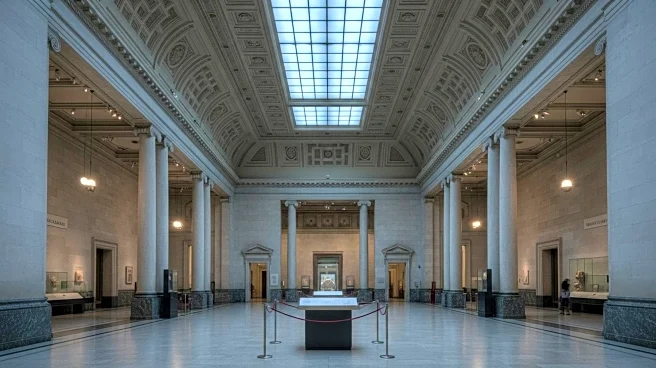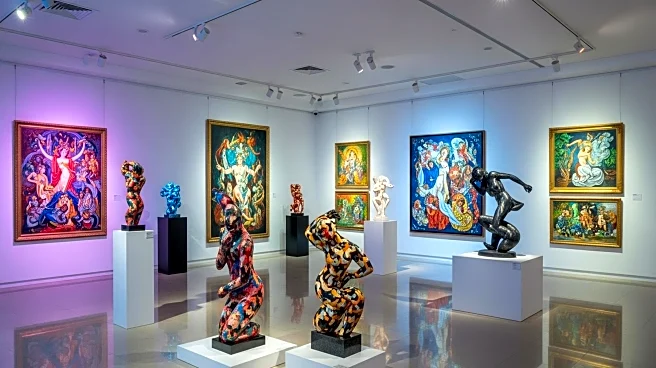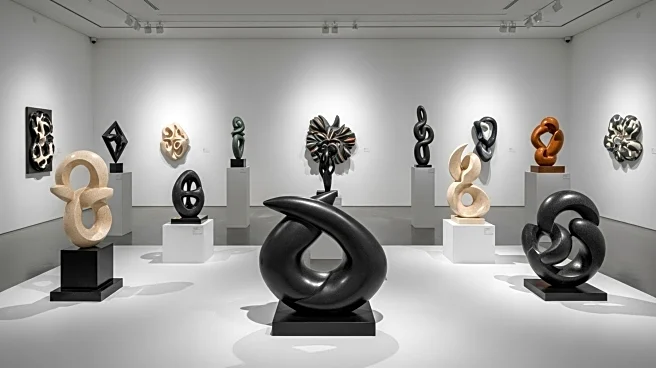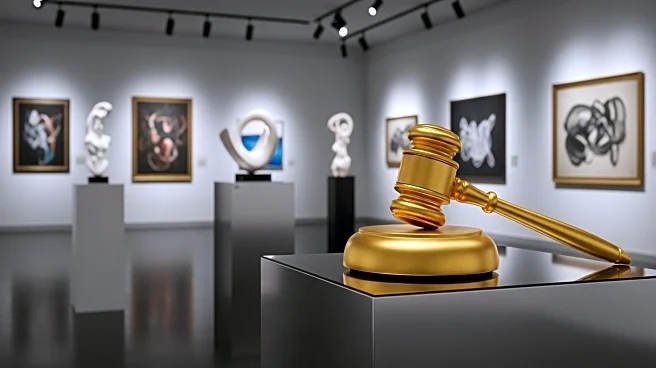What's Happening?
Museums across the globe are actively seeking new financial models to sustain operations as traditional funding sources dwindle. With government budgets shrinking and corporate sponsors facing pressure, museums are exploring private funding, endowments, and innovative revenue streams. The International Research Alliance on Public Funding for Museums reported a significant decline in public funding, prompting institutions to rely more on private sources. Museums are adopting endowments, diversifying revenue through commercial print sales, and leveraging partnerships to cut costs. The Toledo Museum of Art has successfully generated revenue through auction price guarantees, while the Guggenheim Foundation collaborates with Avant Arte for fundraising through limited edition prints.
Why It's Important?
The shift in funding strategies is crucial for museums to maintain their cultural and educational roles amid financial challenges. As public funding decreases, museums must adapt to ensure sustainability and growth. The adoption of private funding and innovative revenue streams allows museums to continue offering valuable cultural experiences. This transformation impacts the broader art ecosystem, influencing how museums engage with patrons and manage collections. The focus on transparency and meaningful engagement aligns with the values of younger generations, potentially securing long-term support. Museums that successfully navigate these changes can enhance their resilience and relevance in a competitive cultural landscape.
What's Next?
Museums are expected to continue exploring diverse funding strategies and partnerships to secure financial stability. The collaboration between institutions, such as the National Gallery and Tate, signals a new era of cooperation that may redefine national collections. Museums will likely increase their digital presence, embracing technology to improve operations and engagement. As the next generation of patrons seeks meaningful involvement, museums may develop new pathways for participation and support. The ongoing adaptation to financial challenges will shape the future of museums, influencing their role in society and their ability to preserve cultural heritage.
Beyond the Headlines
The evolving financial landscape of museums raises ethical and cultural questions about the role of private funding in public institutions. As museums rely more on private sources, they must balance commercial interests with their mission to serve the public. The shift towards private funding may alter the perception of museums, affecting their accessibility and inclusivity. Additionally, the focus on digital transformation presents opportunities and challenges in preserving the authenticity of cultural experiences. Museums must navigate these complexities to maintain their integrity and fulfill their educational and cultural responsibilities.










